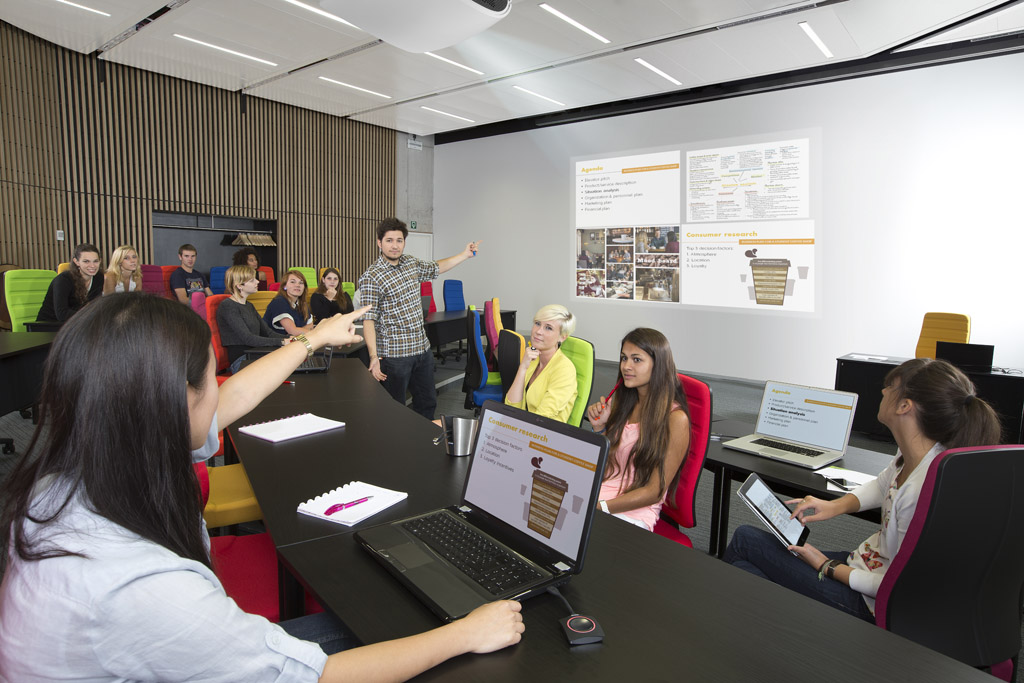
We put this easy to use presentation and collaboration tool from a big name in visualisation to the test.
Anyone familiar with Barco will know that it is a huge name in visual displays, projection and videowalls. The company has been behind some of the most spectacular entertainment spectacles of recent times. Which is why, when one of its products appeared on the education technology radar, there was a degree of surprise and a smattering of intrigue. Could the AV giant replicate its success in a very different market?
As you might expect, ClickShare – Barco’s collaboration tool – is slick in design and clever in purpose. It is a presentation tool, which allows users to share their screens with the touch of a button, regardless of their chosen device. Let’s say you’re in a tutorial and one group of students are working on a PC laptop, another on a MacBook and a third group on a tablet or even a smartphone, ClickShare will break down the barriers of sharing screens. And, crucially, it will happen quickly – without the need to swap over cables or adjust settings.
There are currently two versions of ClickShare. There’s the high end, executive level CSC-1, which offers functionality and a price-point that are firmly aimed at business environments. The second, and the one under review, is the CSM-1.
The CSM-1 comes with two USB-powered ClickShare buttons and a base unit. The base unit has a fixed connection to the meeting room’s display or projector – connected via the HDMI or 15-pin VGA port back of the unit. And the ClickShare button connects to a user’s laptop via its USB port. Other connections include a second USB port on the front, an RJ-45 LAN port and audio line out mini jack socket (3.5mm).
To activate the button and connect to the base unit, the user follows the same method they would to access a USB memory stick, double clicking the ClickShare application. When the user is connected, a notification will appear on the laptop screen and the button will stop flashing. The user will stay connected to the base unit until the button is disconnected from the laptop.
During the trial, we connected a laptop running Windows 7, an OS X 10.9 MacBook and an iPhone on iOS 8. IOS and Android smartphones and tablets can connect to ClickShare and share content using the free app.
Users show their personal screen on the main display by simply clicking their button – either the physical USB button or the one built in to the app. The latest button to be pressed overrides the previous displayed device. Up to eight devices can be connected at any one time, up to a distance of 30m.
The system is very easy to set up and use. It takes less than five minutes to unpack the box, plug in the base and connect it to the display and connect the devices that will be active during the session. Other than some very minor connection issues – such as being bumped off the connection temporarily when a new device joined – there aren’t many negatives to talk about. A very short lag between the device and main display may irk some users, but in the context of the clumsy methods most of us are used to when connecting multiple devices to the same screen, it’s barely worth mentioning.
The challenge, as it often is with really good technology, is cost. The scaled down CSC-1, in RRP inc. VAT terms, is over £3,000 cheaper than the CSC-1. But it is still north of £1,600 for a base and two USB buttons. Extra buttons can be added for around £295 (inc. VAT).







